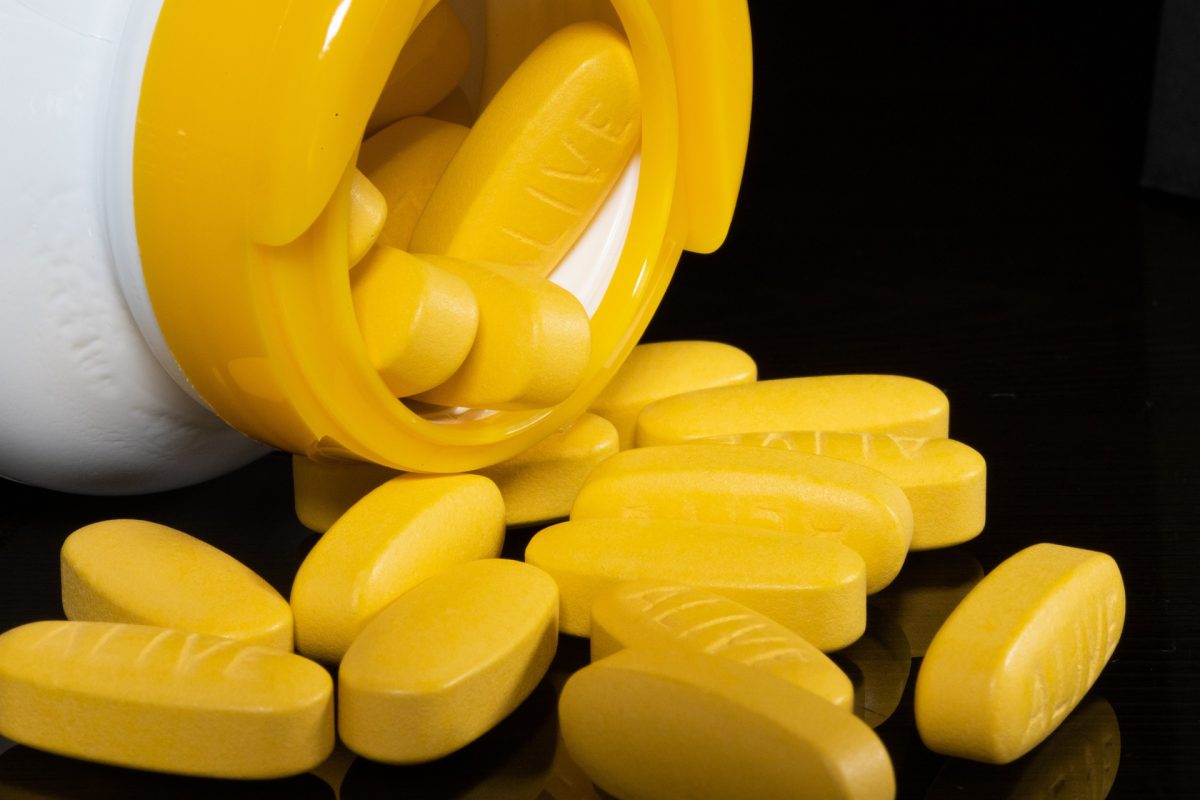by Dr. Devashree Jahagirdar, Ph.D.
7 minutes
Microphysiological Systems (MPS) and Organ-on-Chip: The Global Regulatory Landscape and India’s Next Steps
Organ-on-chip and MPS technologies are reshaping drug development, supporting the 3Rs, SDGs, and reducing reliance on animal testing.
20250707172557.webp)
Image Source: Nature
Expertly Curated by: Dr. Devashree Jahagirdar and Saumya Jaiswal
Abstract
This article highlights the growing importance of in vitro devices, such as organ-on-chip systems, in advancing the 3Rs (Replacement, Reduction, and Refinement) and supporting the United Nations Sustainable Development Goals (SDGs). It explores global efforts to integrate these innovative technologies into pharmaceutical research and development, along with the regulatory hurdles that remain. The article also sheds light on India’s emerging initiatives to incorporate such models into its drug development landscape.
Limitations with Current Drug Testing Methods
The pre-clinical phase in the drug development process tests drugs in vitro as well as conducts trials on animal models. For years, two-dimensional (2D) cell cultures have been the standard in biomedical research, drug screening, and toxicity testing. While they offer simplicity and scalability, 2D models fall short in replicating the structural and functional complexity of human tissues. This gap has contributed to poor clinical translation, with many promising drugs failing in late-stage trials. In response, the scientific community is increasingly embracing three-dimensional (3D) culture systems with a provision of incorporating the physiological parameters, ushering in a paradigm shift in how we model human biology.
Impactful Alternative: Microphysiological Systems (MPS)
3D culture platforms such as organ-on-chip (OoC) systems, spheroids, organoids, and scaffold-based constructs better mimic in vivo tissue architecture, cellular heterogeneity, and microenvironmental interactions. These features, clubbed together, are referred to as microphysiological systems (MPS), improve the physiological relevance of preclinical studies, enabling more accurate predictions of drug efficacy and toxicity. With their potential to reduce reliance on animal models and enhance personalized medicine, MPSs are rapidly gaining attention from researchers, industry stakeholders, and regulatory bodies alike.
However, this rapid advancement has outpaced the development of a clear regulatory framework. Questions around standardization, validation, and reproducibility remain central. Regulatory agencies like the U.S. Food and Drug Administration (FDA) and the European Medicines Agency (EMA) are beginning to recognize the promise of these models, but the lack of harmonized guidelines and performance criteria poses challenges for broader adoption.
This report explores the evolving regulatory landscape for MPS. We examine current policies, global efforts toward standardization, and the hurdles that must be addressed to translate these models into validated tools for drug development and safety testing. As the third dimension rises, aligning innovation with regulation will be key to unlocking its full potential.
Regulation is the backbone of safe and effective biomedical innovation. In the context of drug development, regulatory frameworks ensure that any new testing technology such as 3D cell cultures or OoC systems, is scientifically validated, reproducible, and capable of predicting human responses accurately. As these models become more sophisticated, mimicking real human tissue architecture and functions, their integration into regulatory pipelines is essential for translating lab success into real-world impact.
A recent Indian example underscores this urgency: the Central Drugs Standard Control Organization (CDSCO) in India flagged 186 drugs that failed to meet quality standards. Such quality lapses highlight the critical need for robust preclinical screening tools and a strong regulatory system to catch inefficacies or risks early in the pipeline.
Despite their promise, MPSs still face fragmented regulatory recognition globally. Agencies like the FDA, EMA, and CDSCO are initiating efforts, but lack of harmonized guidelines slows wider adoption. Establishing universal regulatory benchmarks for these in vitro cultures will not only accelerate innovation but also restore public trust and strengthen drug safety worldwide.
Image credit: ChatGPT
Global Efforts to Integrate MPS for Better Drug Predictability
Globally, regulatory agencies are increasingly acknowledging the promise of MPS models in enhancing drug safety and efficacy assessments. The FDA has taken landmark steps, including the acceptance of a liver-on-chip platform under the ISTAND (Innovative Science and Technology Approaches for New Drugs) pilot. This model, using human liver cells and simulating mechanical forces, enables more predictive assessments of drug-induced liver injury for certain drug classes during Investigational New Drug (IND) submissions.
Supporting this shift, the NCATS Tissue Chip Program (NIH) and DARPA have played pivotal roles in advancing human-relevant, organ-on-chip platforms for toxicity screening, rare disease modelling, and personalized medicine. These efforts are reinforced by the FDA’s Alternative Methods Working Group, aligned with the FDA Modernisation Act 2.0, which supports the integration of non-animal testing alternatives like MPS into regulatory science. Industry partners like Emulate Inc. and consortia such as the IQ MPS Affiliate are collaboratively building use-case data and standardization protocols to ease regulatory adoption.
“...this bipartisan effort is a step toward ending the needless suffering and death of animal test subjects … will accelerate innovation and get safer, more effective drugs to market more quickly by cutting red tape that is not supported by current science.”
- Rand Paul, Senator
In Europe, the EUROoCS society and ORCHID project have unified stakeholders to create a cohesive roadmap for organ-on-chip adoption. The European Commission’s Joint Research Centre (JRC) has outlined a roadmap to standardize terminology, performance criteria, and data reporting for regulatory readiness. Additionally, CEN-CENELEC, the EU’s standardization authority, has established dedicated focus groups to develop harmonized technical specifications for organ-on-chip platforms.
The European Medicines Agency (EMA) is actively facilitating regulatory dialogue through the 3Rs Working Party, jointly managed with veterinary regulators, to promote scientifically validated alternatives to animal testing. EU funding mechanisms like Horizon 2020 have supported next-gen OoC models across applications in pharmaceuticals, cosmetics, and chemical safety.
Meanwhile, the Netherlands' ISO/TC 276/SC 2 committee is spearheading international standardization in MPS/OOC technologies. Collaborating across ISO working groups, this initiative addresses the full pipeline from engineering and biological components to data processing and system characterization, ensuring interoperability and regulatory compatibility.
Overall, while diverse in structure and pace, global regulatory ecosystems are converging toward the integration of 3D cultures and OoC platforms. This signals a paradigm shift, where data from human-relevant in vitro systems can increasingly complement or even replace traditional preclinical models in regulatory decision making.
The regulatory acceptance of MPS, including organ-on-chip platforms, faces several key challenges despite their growing promise in drug development. A primary hurdle is the absence of standardized validation metrics or universally accepted protocols to assess the reproducibility, accuracy, and predictive relevance of MPS platforms and the biological components they use. Without a regulatory "gold standard," agencies lack a consistent framework for evaluating data generated from these systems.
Although initiatives like the NIH’s Tissue Chip Testing Centers and collaborations with the FDA and the IQ Consortium aim to validate and benchmark MPS tools, industry adoption remains limited. Pharmaceutical companies are cautious about including MPS data in IND applications due to uncertainty around acceptance and potential regulatory delays. This hesitancy is compounded by the limited precedent of MPS data being submitted and evaluated in regulatory dossiers.
Efforts such as the FDA’s ISTAND pilot program signal growing interest, but MPS assays are still used predominantly by early adopters, not mainstream pharma. The field also lacks a clear regulatory guidance document or “safe harbour” provision for MPS data inclusion. Calls from recent workshops advocate for open dialogue between regulators, developers, and end-users, along with the need for position papers and global regulatory alignment.
Overall, regulatory integration of MPS hinges on robust validation, transparent data sharing, independent testing by CROs, and cohesive international cooperation to accelerate acceptance and establish trust in this transformative technology.
India’s Opportunity to Lead MPS Innovation
As the global scientific community accelerates toward more human-relevant, ethical, and predictive models, a pressing question emerges: Where does India stand in this revolution?
Experts argue that India needs more than scattered research efforts; it needs a bold, cohesive national strategy. This begins with the formation of a dedicated national task force on MPS, bringing together voices from science, regulation, and industry. Such a body would coordinate inter-ministerial efforts, monitor international regulatory trends, and provide strategic direction to position India as a serious global player in next-generation in vitro technologies.
Just as critical is the creation of a regulatory advisory committee to evaluate, validate, and standardize Indian-developed MPS platforms. By aligning with OECD and ISO guidelines, India can fast-track the global regulatory acceptance of its innovations. Without this framework, even the most promising models risk stagnation at the preclinical stage. But vision must be backed by investment. Targeted funding programs through DBT, DST, and ICMR should be launched supporting not just foundational research but also translational efforts and early commercialization. Establishing Centers of Excellence in top-tier institutes would anchor this effort, serving as innovation clusters for MPS development, validation, and training of the next generation of researchers. The very first initiative by Government of India taken by CDSCO on March 09, 2023, issued the draft New Drugs and Clinical Trials (Amendment) Rules, 2023, permitting researchers to utilize non-animal and human-relevant methods for testing the safety and effectiveness of new drugs.
Image credit: ChatGPT
Additionally, a centralized data repository could be the backbone of India’s MPS ecosystem, housing, comparing, and benchmarking models for regulatory and industrial use. And to truly scale, strong industry–academic partnerships must be nurtured to co-develop devices, clinical pipelines, and real-world applications.
“If India is to emerge as the innovation centre for drug discovery and development research, the current state of the art should be embraced by both the public and private sectors. Government, academia, and industry collaborations need to be encouraged. In addition, regulatory bodies should be in closed loop with both public and private sectors for any policy changes that may be required in the future in support of non-animal technologies.”
- Soumya Swaminathan, Former Director-General, Indian Council of Medical Research (ICMR)
With strategic planning, India can do more than catch up, it can lead. In embracing MPS, the country has a unique opportunity to revolutionize drug discovery, reduce animal testing, and deliver on the promise of patient-relevant healthcare innovation.
The path forward for advancing MPS adoption in India hinges on a few critical actions. First, the creation of a unified platform that brings together subject matter experts, along with collaboration across academia, contract research organizations (CROs), pharmaceutical industries, and interdisciplinary technology sectors. Second, the establishment of a dedicated task force to address regulatory frameworks and accelerate the validation of MPS technologies. Finally, fostering active participation from both private and public sectors to support MPS-focused startups and promote standardized, scalable manufacturing of these innovative platforms.



